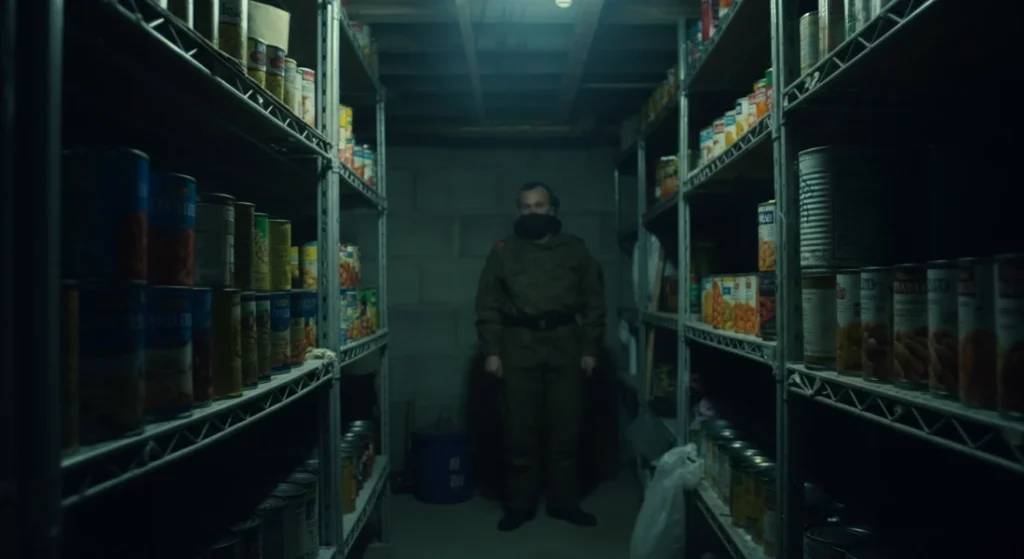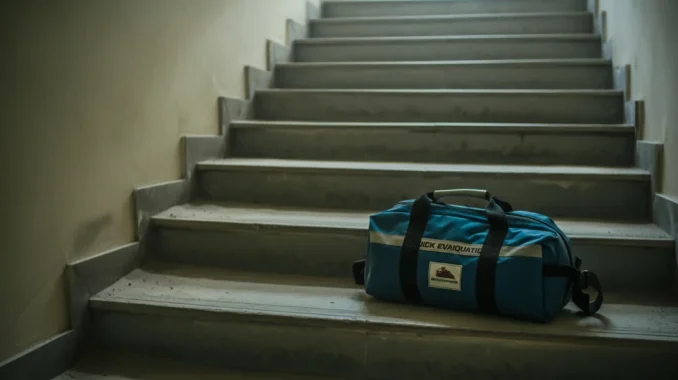Disasters can strike without warning—fires, floods, conflicts, home intrusions, or war. Knowing the safest areas in your home can mean the difference between survival and serious injury. Each type of disaster requires different safety measures, so understanding your home’s weak points and strong points will help you make quick, informed decisions.
In conflict zones, war, or civil unrest, knowing where to hide, how to reinforce safe zones, and how to stay undetected becomes critical. Unlike natural disasters, these threats involve human danger, forced entry, and potential direct violence, requiring a different approach to home safety.

This guide will walk you through how to assess, identify, and prepare the safest areas in your home for different emergency situations, with a focus on conflict, war, and home intrusions.
Step 1: Assess the Risks Specific to Your Area
Not every home faces the same threats. Start by identifying the most likely threats based on where you live:
- Flooding – Low-lying areas, riverbanks, and heavy rainfall zones.
- Fires – Urban areas, heavily wooded areas, or near industrial zones.
- Civil Unrest or Intrusions – Urban areas, conflict zones, or high-crime neighborhoods.
- Military Conflicts or War – Areas experiencing political instability, border disputes, or war.
Once you know your risks, you can adapt your safety plan accordingly. A home designed to withstand flooding may not necessarily protect you from gunfire, looters, or military raids, so it’s essential to adjust based on your specific threats.
Step 2: General Rules for Identifying Safe Areas
Regardless of the situation, there are general safety rules that apply when choosing a secure area inside your home:
- Stay away from windows – Flying glass, bullets, or explosion shockwaves pose serious dangers.
- Avoid large furniture that could tip over – Bookshelves, cabinets, and heavy wall decorations can fall.
- Look for structurally strong areas – Reinforced rooms, basements, or underground shelters are ideal.
- Stay away from exterior walls – These can collapse or be vulnerable to gunfire or debris.
- Find areas with minimal loose objects – The fewer things that can fall, the better.
- Have an emergency exit strategy – Every safe zone should have a way out in case evacuation is necessary.
- Consider noise and visibility – In war or home invasion scenarios, remaining silent and hidden is crucial.
Step 3: Finding Safe Areas Based on Conflict, War, and Intrusions
1. Home Invasions, Civil Unrest & War Situations
If there is civil unrest, military action, or a break-in, your priority is staying hidden, silent, and secure.
- A reinforced safe room or panic room – If possible, invest in a room with reinforced doors and walls.
- A locked, interior room with a strong door – Bathrooms, closets, or storage rooms can be used for shelter.
- An attic or basement (if safe to access quietly) – Basements can offer protection, but not if flooding is a risk.
- Behind furniture or inside hidden storage spaces – If escape isn’t possible, concealment is key.
What Makes a Good Safe Room?
- Reinforced doors and locks – A solid-core door with heavy-duty locks is ideal.
- Thick walls or bullet-resistant materials – Brick or concrete walls offer more protection.
- Soundproofing – Prevents detection if intruders are searching for people.
- A backup exit – A hidden or secondary escape route is crucial.
2. Surviving Gunfire and Bombing Threats
In war zones, homes can be targeted by gunfire or bomb blasts. Knowing where to take cover is critical:
- Reinforced concrete or brick walls – These offer better protection against bullets and explosions.
- Stay in lower floors – The ground floor or basement provides better protection from aerial threats.
- Find corners of rooms, near load-bearing walls – These are structurally stronger.
- Lie flat on the ground if caught in crossfire – Bullets and debris travel higher.
What NOT to do:
- Do not stand near windows—they can shatter from blasts.
- Do not stay in upper floors—they are more exposed.
- Avoid doorways that open directly outside—they can be entry points for intruders.
3. Fire & Evacuation Scenarios
If your home is at risk of fire or attack, knowing how to escape is crucial.
- Have multiple exit strategies – Windows, balconies, or rooftop escapes can be lifesaving.
- Stay low to avoid smoke inhalation – If moving through a burning building, crawl to avoid toxic fumes.
- Avoid rooms with only one exit – You may become trapped.
What NOT to do:
- Do not attempt to outrun fire—heat and smoke spread faster than you can run.
- Avoid using elevators—they can fail or be filled with smoke.
Step 4: Preparing & Securing Safe Zones
Once you’ve identified the safest areas in your home, take additional steps to ensure they are truly crisis-ready:
- Stock each safe zone with emergency supplies – Include water, food, first aid, and a flashlight.
- Install reinforced doors and locks – Essential for protection during war or home invasions.
- Keep important documents in waterproof containers – Passports, IDs, and emergency contacts should be secure.
- Practice emergency drills – Run practice scenarios with your family so everyone knows where to go.
- Have backup communication methods – A charged power bank, whistle, or two-way radio can help in a crisis.
- Reinforce your home exterior – Metal bars on windows, security cameras, and motion sensor lights deter intruders.
Conclusion: Staying Safe in Any Crisis
Identifying the safest areas in your home is a crucial step in emergency preparedness. Each type of disaster requires different safety strategies, and knowing where to go can save lives.
By following this guide, you can:
- Assess your home’s strengths and weaknesses based on possible threats.
- Designate and prepare the safest areas for emergencies.
- Avoid dangerous mistakes that could put you at greater risk.
- Practice and refine your emergency plan with family members.
- Reinforce your home against intrusions, war-related risks, and civil unrest.
Preparedness is key. Take the time now to identify and secure the best safe zones in your home. The more you plan, the better your chances of staying safe in a crisis.




